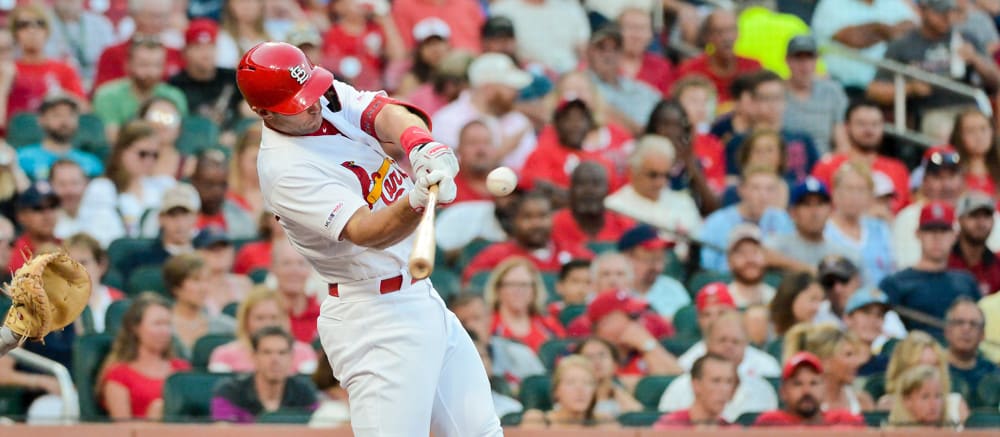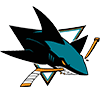We've nearly reached the final month of the regular season, which means the nature of baseball, and therefore also fantasy baseball, is about to change in a number of mostly small, subtle ways. Adjusting properly to those changes can help you eke out a point in the standings in a tightly contested roto league or give you the slight edge you need to win a playoff matchup in a head-to-head league.
The most obvious change is that rosters expand to 28 players, a generally well-liked change from the previous rule in which rosters expanded all the way to 40. The less dramatic roster expansion still allows teams to give prospects their first cups of coffee without allowing teams to go with six bullpen games per week.
Other changes to the game down the stretch are of the unofficial variety. Most notably, expect the behavior of noncontending teams to change. Don't expect many minimum-length stays on the injured list for players on those teams, and players who have dealt with nagging injuries throughout the year are at risk of being shut down. If a player on one of those teams suffers a new injury and has an ambiguous return date, don't count on them coming back at all.
Even healthy players on teams without playoff hopes can't necessarily be relied on to the same extent you've relied on them up to this point. Expect a few more rest days than usual for star players on such teams, as there's no
We've nearly reached the final month of the regular season, which means the nature of baseball, and therefore also fantasy baseball, is about to change in a number of mostly small, subtle ways. Adjusting properly to those changes can help you eke out a point in the standings in a tightly contested roto league or give you the slight edge you need to win a playoff matchup in a head-to-head league.
The most obvious change is that rosters expand to 28 players, a generally well-liked change from the previous rule in which rosters expanded all the way to 40. The less dramatic roster expansion still allows teams to give prospects their first cups of coffee without allowing teams to go with six bullpen games per week.
Other changes to the game down the stretch are of the unofficial variety. Most notably, expect the behavior of noncontending teams to change. Don't expect many minimum-length stays on the injured list for players on those teams, and players who have dealt with nagging injuries throughout the year are at risk of being shut down. If a player on one of those teams suffers a new injury and has an ambiguous return date, don't count on them coming back at all.
Even healthy players on teams without playoff hopes can't necessarily be relied on to the same extent you've relied on them up to this point. Expect a few more rest days than usual for star players on such teams, as there's no need to push anybody and risk injury at the end of a lost season. Additionally, don't expect fringy veterans on expiring deals to see the field very often down the stretch for these teams, as those organizations have little incentive to give at-bats to players who aren't part of the future. That does mean, however, that a handful of unheralded younger options on such teams could get the chance to prove themselves, offering reason for fantasy players to speculate.
Players who fit into the above categories show up throughout this week's article, though we'll kick things off with a pair of veteran hitters who have reached another level in recent weeks.
RISERS
 Paul Goldschmidt, 1B, Cardinals: A certain idiot advised readers to trade Goldschmidt away in late May, on the grounds that his outstanding 189 wRC+ came with merely very good underlying numbers and was inflated by a .406 BABIP. Since the date that article was published, Goldschmidt has gone on to post a 196 wRC+, and that doesn't seem to be merely a BABIP fluke, as he's dropped to a more reasonable .367 over that stretch. Oops. There's a case to be made that Goldschmidt doesn't really fit this column given how outstanding he's been all season, but I've chosen to include him here because he's somehow been even better in the second half. After hitting .330/.414/.590 in the first half, he's somehow managed a .359/.442/.744 line since the break. He's trimmed his strikeout rate slightly from 21.2 percent to 19.6 percent while increasing his barrel rate from 11.2 percent to 16.3 percent. The result is that rather than seeing his results tail off to match his process, his process has improved to match and even improve his results. Not bad for a guy who turns 35 in less than two weeks.
Paul Goldschmidt, 1B, Cardinals: A certain idiot advised readers to trade Goldschmidt away in late May, on the grounds that his outstanding 189 wRC+ came with merely very good underlying numbers and was inflated by a .406 BABIP. Since the date that article was published, Goldschmidt has gone on to post a 196 wRC+, and that doesn't seem to be merely a BABIP fluke, as he's dropped to a more reasonable .367 over that stretch. Oops. There's a case to be made that Goldschmidt doesn't really fit this column given how outstanding he's been all season, but I've chosen to include him here because he's somehow been even better in the second half. After hitting .330/.414/.590 in the first half, he's somehow managed a .359/.442/.744 line since the break. He's trimmed his strikeout rate slightly from 21.2 percent to 19.6 percent while increasing his barrel rate from 11.2 percent to 16.3 percent. The result is that rather than seeing his results tail off to match his process, his process has improved to match and even improve his results. Not bad for a guy who turns 35 in less than two weeks.
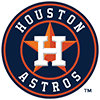 Alex Bregman, 3B, Astros: Bregman has excellent plate discipline, but he doesn't hit the ball hard enough to suggest that the power we saw early in his career is about to come back. The 41 homers he managed back in 2019 look like quite a fluke, as they came with a 4.6 percent barrel rate. In the Statcast era, no other hitter with a barrel rate that low managed more than 31 homers. Bregman's high launch angle allows him to get to a respectable home run total despite the fact that he doesn't hit the ball particularly hard, but all those flyballs also serve to give him a lower batting average than you'd expect for the amount of contact he makes. At least, that's how I would have described him up until a few weeks ago. Over his last 17 games, he's homered seven times while slashing .383/.465/.867. Five of those homers, and 13 of his 20 total blasts on the year, have come at home, where the short porch in left field is perfect for a player who hits it high but not all that hard. He has more value than the underlying metrics suggest whenever he's at Minute Maid Park.
Alex Bregman, 3B, Astros: Bregman has excellent plate discipline, but he doesn't hit the ball hard enough to suggest that the power we saw early in his career is about to come back. The 41 homers he managed back in 2019 look like quite a fluke, as they came with a 4.6 percent barrel rate. In the Statcast era, no other hitter with a barrel rate that low managed more than 31 homers. Bregman's high launch angle allows him to get to a respectable home run total despite the fact that he doesn't hit the ball particularly hard, but all those flyballs also serve to give him a lower batting average than you'd expect for the amount of contact he makes. At least, that's how I would have described him up until a few weeks ago. Over his last 17 games, he's homered seven times while slashing .383/.465/.867. Five of those homers, and 13 of his 20 total blasts on the year, have come at home, where the short porch in left field is perfect for a player who hits it high but not all that hard. He has more value than the underlying metrics suggest whenever he's at Minute Maid Park.
 Lars Nootbaar, OF, Cardinals: Nootbaar was merely a league-average hitter as a rookie last year and didn't feature regularly in the first half of this season, spending more than a month in the minors. He's been a near-everyday starter in right field throughout the second half, however, as his performance since the break suggests he won't be going anywhere anytime soon. The most impressive aspect of his game has been his plate discipline, as he's combined a 13.4 percent strikeout rate with a 18.7 percent walk rate, a number which trails only Juan Soto, Adley Rutschman and Aaron Judge over that stretch. Toss in a 14.4 percent barrel rate and it all adds up to five homers and a .286/.418/.543 slash line. That excellent on-base ability and all-around success has earned him a move up to the leadoff spot, where he's benefited from setting the table for the likes of Goldschmidt and Nolan Arenado. He now appears to be firmly ahead of fellow young outfielders Dylan Carlson, who's started just one of the last six games, and Juan Yepez, who's been sent to the minors.
Lars Nootbaar, OF, Cardinals: Nootbaar was merely a league-average hitter as a rookie last year and didn't feature regularly in the first half of this season, spending more than a month in the minors. He's been a near-everyday starter in right field throughout the second half, however, as his performance since the break suggests he won't be going anywhere anytime soon. The most impressive aspect of his game has been his plate discipline, as he's combined a 13.4 percent strikeout rate with a 18.7 percent walk rate, a number which trails only Juan Soto, Adley Rutschman and Aaron Judge over that stretch. Toss in a 14.4 percent barrel rate and it all adds up to five homers and a .286/.418/.543 slash line. That excellent on-base ability and all-around success has earned him a move up to the leadoff spot, where he's benefited from setting the table for the likes of Goldschmidt and Nolan Arenado. He now appears to be firmly ahead of fellow young outfielders Dylan Carlson, who's started just one of the last six games, and Juan Yepez, who's been sent to the minors.
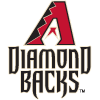 Corbin Carroll, OF, Diamondbacks: In previous years, Carroll wouldn't have been called up in September and may not be considered next year's Opening Day roster, either, instead spending the start of next season "working on his defense" before magically solving all his defensive issues in late April. The new incentives that push teams to call up their top prospects at the start of the season seem to be working, however, and teams are apparently willing to bring up players like Carroll even earlier than that, as the 22-year-old outfielder will be making his major-league debut Monday. Graduations of players like Julio Rodriguez, Bobby Witt and Adley Rutschman have left Carroll as the game's No. 1 fantasy prospect according to RotoWire's James Anderson, and it's not hard to see why. He does it all, hitting for average and power while stealing bases and playing strong defense in center field. His makeup and motor have also received glowing reviews. In 93 minor-league games this season, he's homered 24 times and stolen 31 bases while slashing .307/.425/.610. Expect FAAB budgets to be emptied out next weekend wherever he's still available.
Corbin Carroll, OF, Diamondbacks: In previous years, Carroll wouldn't have been called up in September and may not be considered next year's Opening Day roster, either, instead spending the start of next season "working on his defense" before magically solving all his defensive issues in late April. The new incentives that push teams to call up their top prospects at the start of the season seem to be working, however, and teams are apparently willing to bring up players like Carroll even earlier than that, as the 22-year-old outfielder will be making his major-league debut Monday. Graduations of players like Julio Rodriguez, Bobby Witt and Adley Rutschman have left Carroll as the game's No. 1 fantasy prospect according to RotoWire's James Anderson, and it's not hard to see why. He does it all, hitting for average and power while stealing bases and playing strong defense in center field. His makeup and motor have also received glowing reviews. In 93 minor-league games this season, he's homered 24 times and stolen 31 bases while slashing .307/.425/.610. Expect FAAB budgets to be emptied out next weekend wherever he's still available.
 Matt Manning, SP, Tigers: Manning underwhelmed as a rookie last season, striking out just 14.8 percent of opposing batters en route to a 5.80 ERA in 18 starts. The 2016 ninth-overall pick lasted just two starts this season before a shoulder injury, and he added a biceps issue on top of that while rehabbing, leading to an absence that cost him more than half the season. His first start back in action at the start of August wasn't particularly encouraging, but he's suddenly looked great over his last four outings, posting a 1.80 ERA while striking out 25.7 percent of opposing batters and walking just 5.0 percent. He seemingly used his time on the sidelines to adjust his pitch mix, as he's used his slider 24.8 percent of the time since his return, well above the 15.2 percent usage the pitch had up to that point. Between his injuries and poor performance, I was as out on Manning as it was appropriate to be on a 24-year-old with just 20 big-league starts under his belt, but his recent performance has him looking much more like the pitcher he was supposed to be.
Matt Manning, SP, Tigers: Manning underwhelmed as a rookie last season, striking out just 14.8 percent of opposing batters en route to a 5.80 ERA in 18 starts. The 2016 ninth-overall pick lasted just two starts this season before a shoulder injury, and he added a biceps issue on top of that while rehabbing, leading to an absence that cost him more than half the season. His first start back in action at the start of August wasn't particularly encouraging, but he's suddenly looked great over his last four outings, posting a 1.80 ERA while striking out 25.7 percent of opposing batters and walking just 5.0 percent. He seemingly used his time on the sidelines to adjust his pitch mix, as he's used his slider 24.8 percent of the time since his return, well above the 15.2 percent usage the pitch had up to that point. Between his injuries and poor performance, I was as out on Manning as it was appropriate to be on a 24-year-old with just 20 big-league starts under his belt, but his recent performance has him looking much more like the pitcher he was supposed to be.
FALLERS
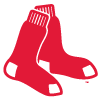 J.D. Martinez, OF, Red Sox: As mentioned in the introduction, don't expect veterans on expiring deals to retain their everyday roles down the stretch if they play for teams having lost seasons. The Red Sox didn't expect this to be one such season, but with their playoff odds dwindling to 2.5 percent per FanGraphs, it certainly seems to be heading that way. Martinez hasn't seen that reduction in playing time yet, as he's started 21 of Boston's last 22 games, but such a drop could be coming soon based not just on his team's place in the standings but also on his second-half performance. The veteran slugger has hit .194/.264/.278 since the break with just a single home run. His strikeout rate has jumped to 27.3 percent. Martinez's barrel rate remains solidly above-average at 10.4 percent, but that's a significant drop from his 13.5 mark from the first half. It's possible Boston shows deference to the veteran and keeps playing him everyday to thank him for his years of service, but even if he keeps starting, he may not be of much use.
J.D. Martinez, OF, Red Sox: As mentioned in the introduction, don't expect veterans on expiring deals to retain their everyday roles down the stretch if they play for teams having lost seasons. The Red Sox didn't expect this to be one such season, but with their playoff odds dwindling to 2.5 percent per FanGraphs, it certainly seems to be heading that way. Martinez hasn't seen that reduction in playing time yet, as he's started 21 of Boston's last 22 games, but such a drop could be coming soon based not just on his team's place in the standings but also on his second-half performance. The veteran slugger has hit .194/.264/.278 since the break with just a single home run. His strikeout rate has jumped to 27.3 percent. Martinez's barrel rate remains solidly above-average at 10.4 percent, but that's a significant drop from his 13.5 mark from the first half. It's possible Boston shows deference to the veteran and keeps playing him everyday to thank him for his years of service, but even if he keeps starting, he may not be of much use.
 Josh Hader, RP, Padres: Will Hader's season help reverse the trend of supposedly safe closers going earlier and earlier in drafts? With true closers becoming increasingly rare, Hader and Liam Hendriks regularly crept up into the late first round of NFBC drafts this past offseason, with Hader going as high as seventh. The results haven't been pretty. While Hendriks has spent time on the injured list and been more good than great when healthy, Hader has been considerably worse and now ranks 43rd among relievers according to our Earned Auction Values. His move to San Diego has been a disaster, as he's allowed 12 runs in just 4.2 innings of work, striking out eight while walking seven. Six of those runs came Sunday against the Royals, an outing in which he recorded just one out. The Padres had already removed him from the closer role, but he's not doing himself any favors in his quest to reclaim the job. Hader's track record makes it hard to drop him, as does his still-excellent 2.42 SIERA on the season, but if you need a roster spot, cutting a nonclosing reliever who owns a 6.52 ERA is definitely defensible.
Josh Hader, RP, Padres: Will Hader's season help reverse the trend of supposedly safe closers going earlier and earlier in drafts? With true closers becoming increasingly rare, Hader and Liam Hendriks regularly crept up into the late first round of NFBC drafts this past offseason, with Hader going as high as seventh. The results haven't been pretty. While Hendriks has spent time on the injured list and been more good than great when healthy, Hader has been considerably worse and now ranks 43rd among relievers according to our Earned Auction Values. His move to San Diego has been a disaster, as he's allowed 12 runs in just 4.2 innings of work, striking out eight while walking seven. Six of those runs came Sunday against the Royals, an outing in which he recorded just one out. The Padres had already removed him from the closer role, but he's not doing himself any favors in his quest to reclaim the job. Hader's track record makes it hard to drop him, as does his still-excellent 2.42 SIERA on the season, but if you need a roster spot, cutting a nonclosing reliever who owns a 6.52 ERA is definitely defensible.
 Alek Thomas, OF, Diamondbacks: The arrival of Corbin Carroll shouldn't put too big of a dent in Thomas' playing time, as the Diamondbacks likely want to see what the two highly -touted 22-year-old outfielders look like together down the stretch, but Thomas' recent performances could certainly make a case for more time on the bench. Thomas isn't in Carroll's tier as an inner-circle elite prospect, but he's a well-rounded player with plenty of upside. At least, that's what his scouting reports suggested, and that's how things looked through his first 41 major-league games, a stretch in which he slashed .275/.338/.451 with six homers and four steals, putting him on pace for 23 homers and 15 steals per 600 plate appearances. Since then, however, he's hit just .212/.251/.296 in his last 52 games, homering just three times while going 0-for-3 on the basepaths. His strikeout rate has only risen by one point, but his barrel rate has cratered from 7.8 percent to 2.0 percent.
Alek Thomas, OF, Diamondbacks: The arrival of Corbin Carroll shouldn't put too big of a dent in Thomas' playing time, as the Diamondbacks likely want to see what the two highly -touted 22-year-old outfielders look like together down the stretch, but Thomas' recent performances could certainly make a case for more time on the bench. Thomas isn't in Carroll's tier as an inner-circle elite prospect, but he's a well-rounded player with plenty of upside. At least, that's what his scouting reports suggested, and that's how things looked through his first 41 major-league games, a stretch in which he slashed .275/.338/.451 with six homers and four steals, putting him on pace for 23 homers and 15 steals per 600 plate appearances. Since then, however, he's hit just .212/.251/.296 in his last 52 games, homering just three times while going 0-for-3 on the basepaths. His strikeout rate has only risen by one point, but his barrel rate has cratered from 7.8 percent to 2.0 percent.
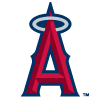 Jared Walsh, 1B, Angels: Walsh broke out in the shortened 2020 campaign and backed up that performance last year, hitting a combined .280/.338/.531 across those two seasons. He's fallen off a cliff this season, however, hitting just .215/.269/.374, with his strikeout rate spiking up to 30.4 percent. We now seemingly know the reason for those struggles, and it's not an encouraging one, as Walsh was diagnosed with thoracic outlet syndrome last week and shut down for the year. Walsh managed just a 92 wRC+ in the first half, but that number plummeted to 37 since the break, suggesting that the issue may have bothered him for a while but reached an untenable point over the last month or two. While there's a sense in which it's nice to see a down season neatly explained by an injury, as that offers hope of a rebound when the player's health improves, that's not necessarily the case with thoracic outlet syndrome, an injury that can ruin careers (see Matt Harvey for one notable example). That makes it tough to hold onto Walsh in dynasty leagues.
Jared Walsh, 1B, Angels: Walsh broke out in the shortened 2020 campaign and backed up that performance last year, hitting a combined .280/.338/.531 across those two seasons. He's fallen off a cliff this season, however, hitting just .215/.269/.374, with his strikeout rate spiking up to 30.4 percent. We now seemingly know the reason for those struggles, and it's not an encouraging one, as Walsh was diagnosed with thoracic outlet syndrome last week and shut down for the year. Walsh managed just a 92 wRC+ in the first half, but that number plummeted to 37 since the break, suggesting that the issue may have bothered him for a while but reached an untenable point over the last month or two. While there's a sense in which it's nice to see a down season neatly explained by an injury, as that offers hope of a rebound when the player's health improves, that's not necessarily the case with thoracic outlet syndrome, an injury that can ruin careers (see Matt Harvey for one notable example). That makes it tough to hold onto Walsh in dynasty leagues.
Jesus Aguilar, 1B, Free Agent: From 2017 through 2021, Aguilar was a solidly above-average hitter, slashing .262/.338/.476 and averaging 28 homers per 600 plate appearances. While his 115 wRC+ over that stretch wasn't all that impressive for a first baseman, it was good enough to keep him valuable as at least a corner infielder in fantasy leagues. That changed this season, as he's slipped to a .236/.286/.388 line with a modest 15 homers. The Marlins, seeing little reason to give at-bats to a 32-year-old on an expiring deal at the end of a losing season, released him Saturday. Other struggling teams likely feel the same way and have little incentive to pick him up. His best hope is to land with a contender as a platoon bat, but even then, he'd only start against southpaws. Considering that his Statcast data backs up the idea that he's having quite a poor season (his hard-hit rate sits in the 29th percentile, while his chase rate sits in the 12th), he may not have any suitors among that group, either.


